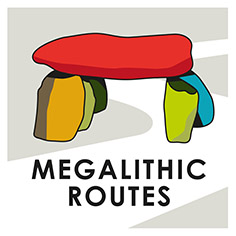The „Straße der Megalithkultur“ in northwest Germany
The origin of the Association for “Megalithic Routes” is the “Straße der Megalithkultur”, a tourist holiday route in northwest Germany. It was launched in 2006 by a group of tourism experts, archaeologists, astronomers, and historians with the aim of introducing the 5000 year-old “Hünengräber” (megalithic graves) as a new trademark of the regions Osnabrücker Land, Emsland, and Wildeshausen Geest. In each of these regions there are centres with an accumulation of megalithic burials.
The monuments consist mostly of so-called passage graves. In terms of construction, they differ markedly from their namesakes in Denmark and southern Scandinavia, but they show great similarity to the “Hunebedden” in Drenthe province in The Netherlands.
In northwest Germany, numerous historical documents, stories and legends are evidence of the great significance that megalithic graves have had for the imaginative world and popular beliefs of the local population since the Middle Ages. Many burials have been given unusual names which are reminiscent of the devil, of creatures with supernatural powers, and legendary popular heroes.
The “Straße der Megalithkultur” connects the towns of Osnabrück, Meppen, and Oldenburg, is 330 km long, and combines the historically most interesting, most attractive, and most well-preserved megalithic graves. Since 27 April 2014, the Europe-wide “Day of Megalithic Culture”, a fully signposted cycle path complements the holiday route for road traffic which was opened in 2009. In addition, there is a supraregional hiking trail, the “Hünenweg”, which connects the regions Osnabrücker Land, Emsland, and Drenthe province in The Netherlands and was opened in 2005.
The Osnabrücker Land region
The town of Osnabrück is located at the southern end of the “Straße der Megalithkultur”. This is where the North German plain merges into the Westphalian hill country and also where the distribution of the northwest German passage graves ends. In this area, many archaeological sites are associated with the names of famous military leaders from the time of the Saxon Wars (772–804 AD) such as one of the extremely rare megalithic graves made of local rock. It is known as Karlsteine. The legend goes that Karl, King of the Franks, smashed the giant capstone into three pieces with his riding crop. The wife of his adversary Widukind, the Saxon leader, is said to be buried nearby below the Gevasteine – also a Neolithic passage grave from the second half of the fourth millennium BC.
There is a further unusual megalithic construction in Hekese, in the northern part of the Osnabrücker Land. Two separate burial chambers are situated 53 m apart, although they obviously belong together because a row of closely set boulders has been placed between them.
The Emsland region
The origin of the term “Hünengrab”, which is still common in northwest Germany today, probably lies in the Emsland region because this is the home of the famous Universalist Johan Picardt. In 1660 he published his theses of the “cruel and barbaric giants, Hünen or collossi” as the builders of the megalithic graves. But some courageous people who armed themselves with heavy wooden clubs had managed to put these tyrants to flight.
Most of the monuments formerly existing in the Emsland region are now destroyed because the sale of the boulders as building material to the neighbouring Netherlands became a lucrative business in the 18th and 19th centuries. But, around the middle of the 19th century, the idea of the protection of historical monuments gained acceptance. As a result, more than 60 impressive relics of the megalithic culture have survived, including the grave in Thuine with an exceptionally elaborate enclosure consisting of a double stone row, and the accumulation of nine megalithic graves in the Hümmling hills (originally 22), which are arranged such that they can rightly be called the “Hünengräberstraße des Hümmling”.
The Wildeshausen Geest region
To the south of Oldenburg lies the district capital of Wildeshausen – famous for its St. Alexander church built in the 9th century and containing the relics of Saint Alexander of Rome. Equally well known are the numerous remains of megalithic culture in the surrounding environment, namely the nature park Wildeshausen Geest. Here several so-called “Hünenbetten” are located, with length up to 104m long and originally constructed of a maximum of 170 boulders per burial. These are considered to be the biggest surviving burials from the Funnel Beaker culture. But the Wildeshausen Geest region seems to have been an attractive settlement area in the Bronze Age too because numerous burial mounds were built in the immediate neighbourhood of the megalithic graves. Particularly famous is the “Pestruper Gräberfeld” which contains more than 500 burials and is considered to be the biggest surviving, above-ground prehistoric cemetery in Central Europe. For this reason the Wildeshausen Geest region is generally and rightly known as a “prehistoric centre”.
The “Straße der Megalithkultur” ends at the “Landesmuseum für Natur and Mensch” in the nearby town of Oldenburg. In a permanent exhibition of modern design, the museum shows the eventful history of the close relationship between humankind and nature spanning more than 6000 years.
Megalithic tombs in Saxony-Anhalt
Once more than 450 megalithic tombs were known in Saxony-Anhalt, which were partially recorded and described as early as the 18th and 19th century. Of these, the still impressive number of 150 megalithic tombs is preserved until today. In accordance with the deposits of the construction material, ice-age boulders once left behind by the glaciers, the main distribution area of the megalithic tombs is concentrated in the north and north-east of Saxony-Anhalt. In the Altmark, in Haldensleber Forst and in the Marienborn region, numerous tombs have been preserved due to centuries of forest cover and extensive land use. The megalithic tombs in the centre of Saxony-Anhalt are a special feature. In the ‘Stone Age Landscape Latdorf’ (Salzland district) – outside the core distribution area of the megalithic phenomenon and away from the glacial drift zone – there are such impressive burial sites as the megalithic tombs of Drosa or Wulfen (both in the Anhalt-Bitterfeld district). Furthermore menhirs or standing stones are also found south of the megalithic landscape. In Saxony-Anhalt we still know of more than 50 of these upright stones, some of which are decorated and show stylised human representations, for example.
The megalithic tombs and menhirs belong to a highly endangered group of monuments. Their research is a major concern, and their protection, maintenance and the development of an infrastructure that makes the monuments accessible to visitors from near and far is the goal of the State Office for Heritage Management and Archaeology. Many of Saxony-Anhalt’s megalithic tombs have already been made accessible for tourism by hiking trails and with information boards. The ‘Dolmengöttin von Langeneichstädt’ (Dolmen Goddess of Langeneichstädt), a menhir statue used as a capstone in a stone chamber tomb of the Middle Neolithic, is also one of five stations of the tourist network ‘Sky Paths’ (www.himmelswege.de), which invites you to a journey into the past, into the prehistory of Saxony-Anhalt!
Websites: https://lda-lsa.de and https://www.landesmuseum-vorgeschichte.de/
Contact:
State Office for Heritage Management and Archaeology Saxony-Anhalt
State Museum of Prehistory
Richard-Wagner-Straße 9
06114 Halle (Saale)
Telephone +49 345 5247-30
Telefax +49 345 5247-351
poststelle@lda.stk.sachsen-anhalt.de
www.lda-lsa.de
info@landesmuseum-vorgeschichte.de
www.landesmuseum-vorgeschichte.de
www.himmelswege.de
Forms and functions of megalithic graves in Schleswig-Holstein
In the vernacular megalithic tombs are often called “mounds”. This has its explanation in the outdated conception of past times that such enormous plants with erratic blocks partly weighing tons could have been established just only by “giants”, thus “giants”. They were thought to be places where the “giants” buried their dead or sacrificial sites.
The large stone graves are a phenomenon which can be proved along the Atlantic coast up to the Mediterranean area and cannot be found in the Central and Eastern European inland. Nor do they appear to have been erected further inland than 400 km from the coast. The much older Western European megalithic period, which is altogether richer and more diverse, seems to have been generally considered the region of origin for the spread of the megalithic idea to Central Europe. In Northern Germany most of the megalithic tombs originate from the middle periods of the Neolithic from about 3,500 B.C. to 2,900 B.C. Within Schleswig-Holstein the Baltic coast area stands out as the primary area of origin for the spread of the complexes. Only here are found the older, so-called Urdolmen, which were intended for the burial of only one person.
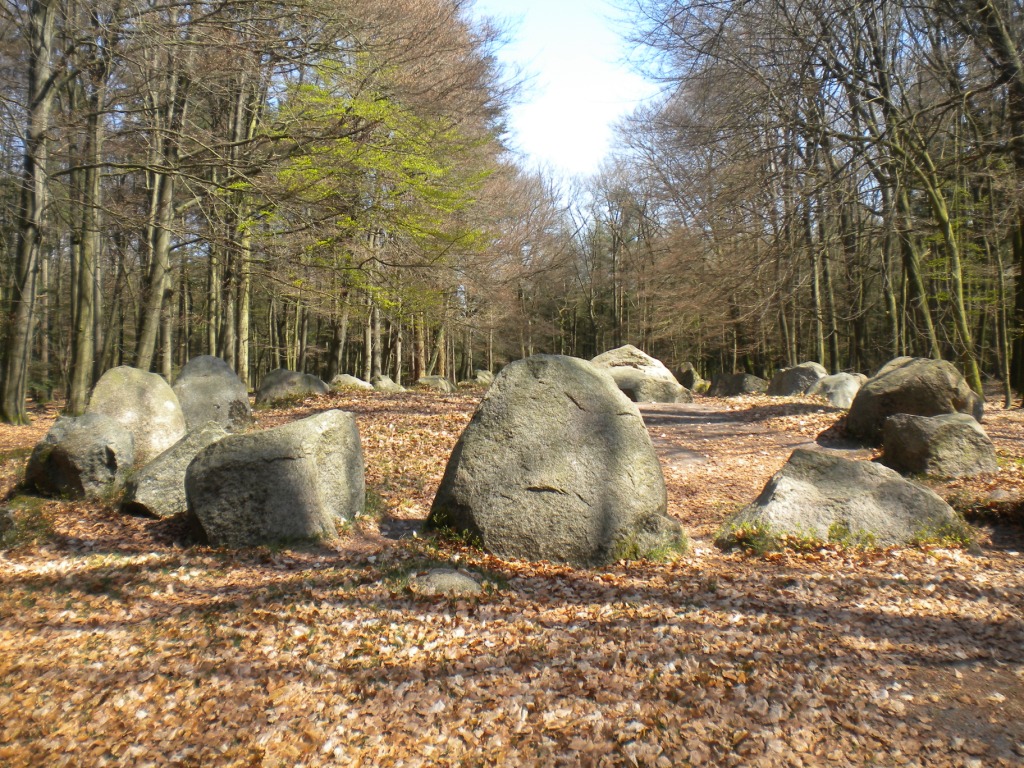




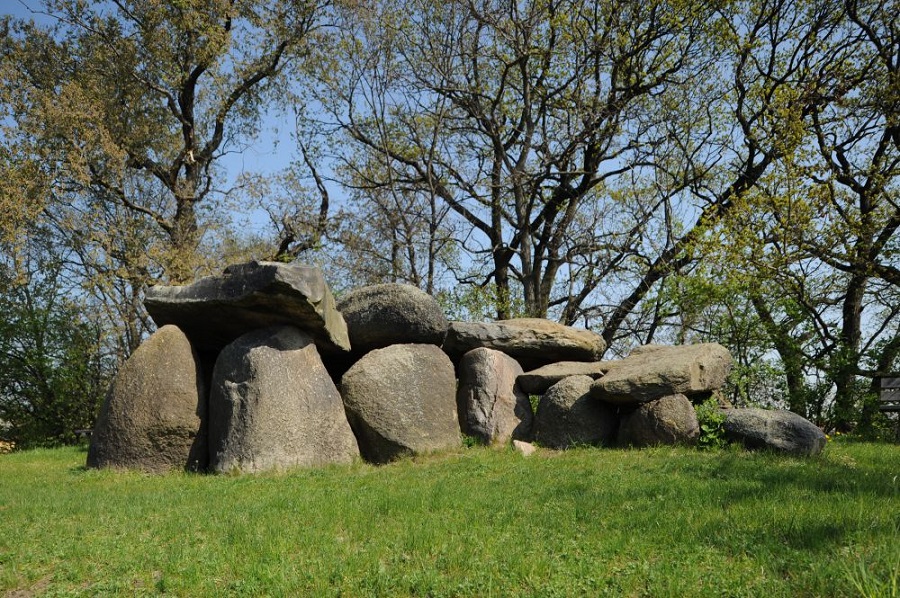
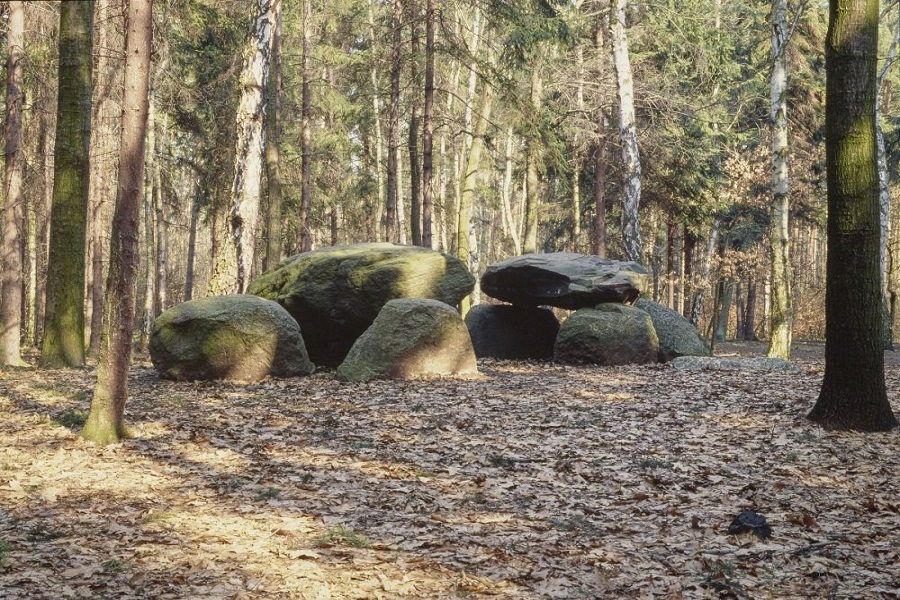
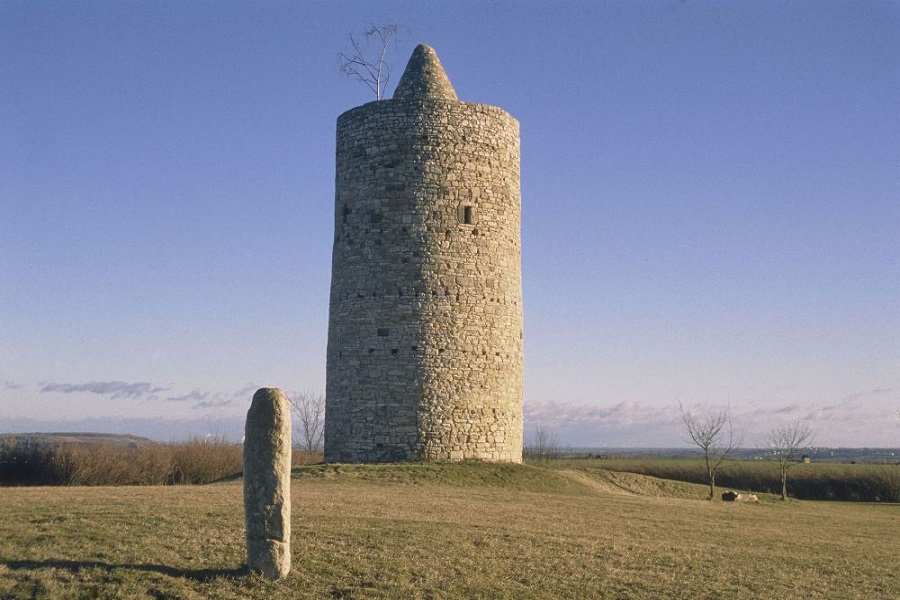
An overview (by a map) of all German megalithic monuments you can find here: https://www.hunebednieuwscafe.nl/alle-hunebedden/
